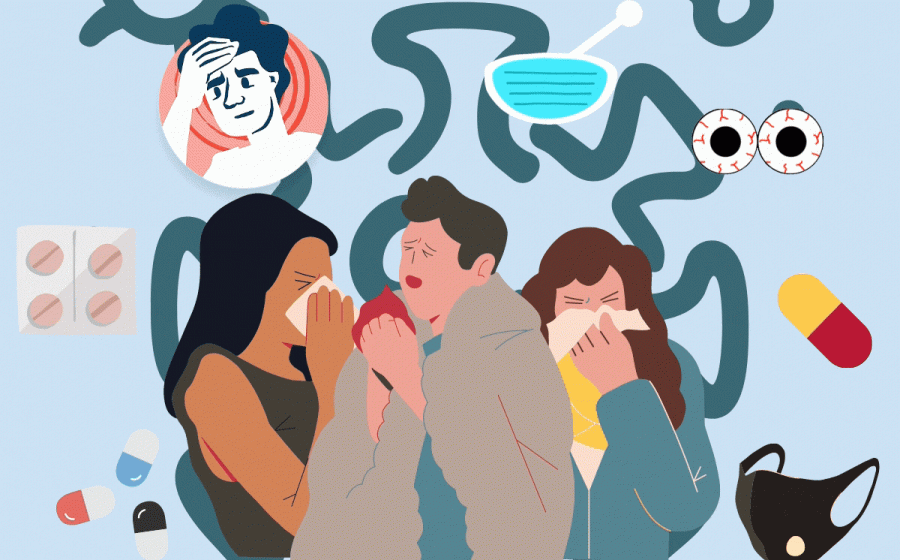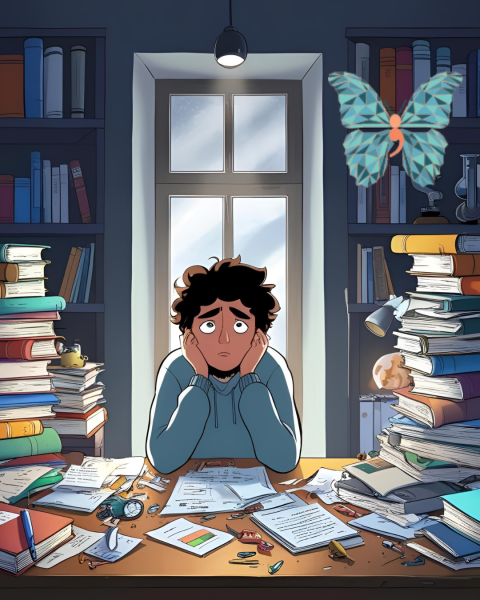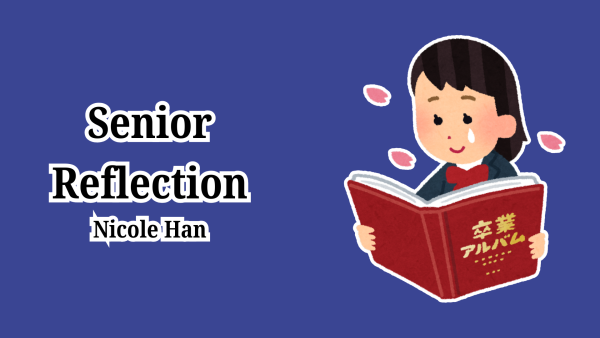Weird 2021 ailments that aren’t covid
Staying at home and adjusting to working at home isn’t easy, not to mention the odd ailments you’ll receive.
With everyone quarantining from your not-so friendly neighborhood disease, we’ve mostly forgotten about other things that put a significant dent in our health while in quarantine.
In light of that, I created a short list of mental and physical stressors we might experience during quarantine with no relation to the disease, in addition to easy fixes to these problems. These may not work for everyone, but it’s something to try if you are experiencing any of these problems. Here are weird 2021 ailments you should definitely still keep track of that aren’t COVID-19.
Eye Strain
Eye strain has occurred in most, if not everyone, because of the constant staring at screens. For some, staring at a computer screen for hours on end isn’t a problem and is the norm for the typical person. However, for the people who don’t normally do that, having some time away from the screen is normally a good fix. On most smartphones, you can track how much screen time you’re spending, and go about ways to decrease those hours.
You could even use a timer to to track how much time you’re spending on your laptop, and use the 20-20-20 rule. For every 20 minutes you’re looking at a screen, stare at something 20 feet away, or simply something that’s far from you—distance wise—for at least 20 seconds. It takes at least 20 seconds for your eyes to relax. While you’re at it, get up from your seat, move around a little bit, and drink water. Your eyes need to hydrate as well.
Loneliness
In a COVID-19 filled time, most interaction with people is gone and loneliness can feel very present. It’s good to reach out to friends and family you don’t interact with often just to check on them and lift them and your spirits just a bit. A simple “Hi, how are you doing? I wanted to check up on you,” goes a long way.
Backaches
Backaches can be pretty common especially if you’re hunched over in a chair when you’re typing, or writing. The strain is especially worse in your neck. Neck pain can lead to overall bad posture, weakness in arms or legs, and whiplash. A good practice to prevent this is to pay attention to if you’re leaning over too much and to do light stretches during any breaks you have. If you’re sitting for more than an hour, stand up and stretch for at least 15 minutes. Maybe even buy a laptop stand to bring the laptop to your eye level to prevent further hunching backs. You don’t want to look like the Hunch-back of Notre Dame once quarantine is over, do you?
Sleepless Nights
Sleep is something that all people need, young or old, or anywhere in between. Ten hours of sleep is recommended for high-schoolers, unlike the eight that is normally recommended for adults. This is because teenage brains aren’t fully developed, so they need more deep rest than adults. Our brains need energy, so when we don’t have energy (via sleep) then we rely on energy through other substances, like sugar or caffeine.
General restlessness is something that people can experience due to the increased usage of screens during late nights studying or working. Setting a time to put away the screens and setting a strict bedtime is a great way to help prevent those sleepless nights.
Headaches
Headaches can be common if looking at screens for an extended period of time. These can be caused by the glare of the screen, improper lighting in the area, the wrong brightness and color for you specifically or a mix of these factors. Taking breaks from screens is the best way to combat these headaches. This can be done during splits between classes, so maybe on your next lunch break, get up and have a glass of water, then maybe take a lap around your house and relax a bit. And if you have the option, try to go outside and get some air.
COVID-19 has been a difficult time for everyone. It is important to pause and take care of your health in any way you can.
Your donation will support the student journalists of Watkins Mill High School. Your contribution will allow us to purchase equipment and cover our annual website hosting costs.
Christopher Weikert is a junior at Watkins Mill High School and an Opinion Editor for the Current. Chris plays percussion part time for the concert band,...

Grace Edwards is a senior at Watkins Mill High School and Co-Editor-in-Chief for The Current. She is a straight-A student who enjoys playing her violin....










Andrius Harton • Jan 27, 2021 at 3:31 pm
Nice! ᜠ